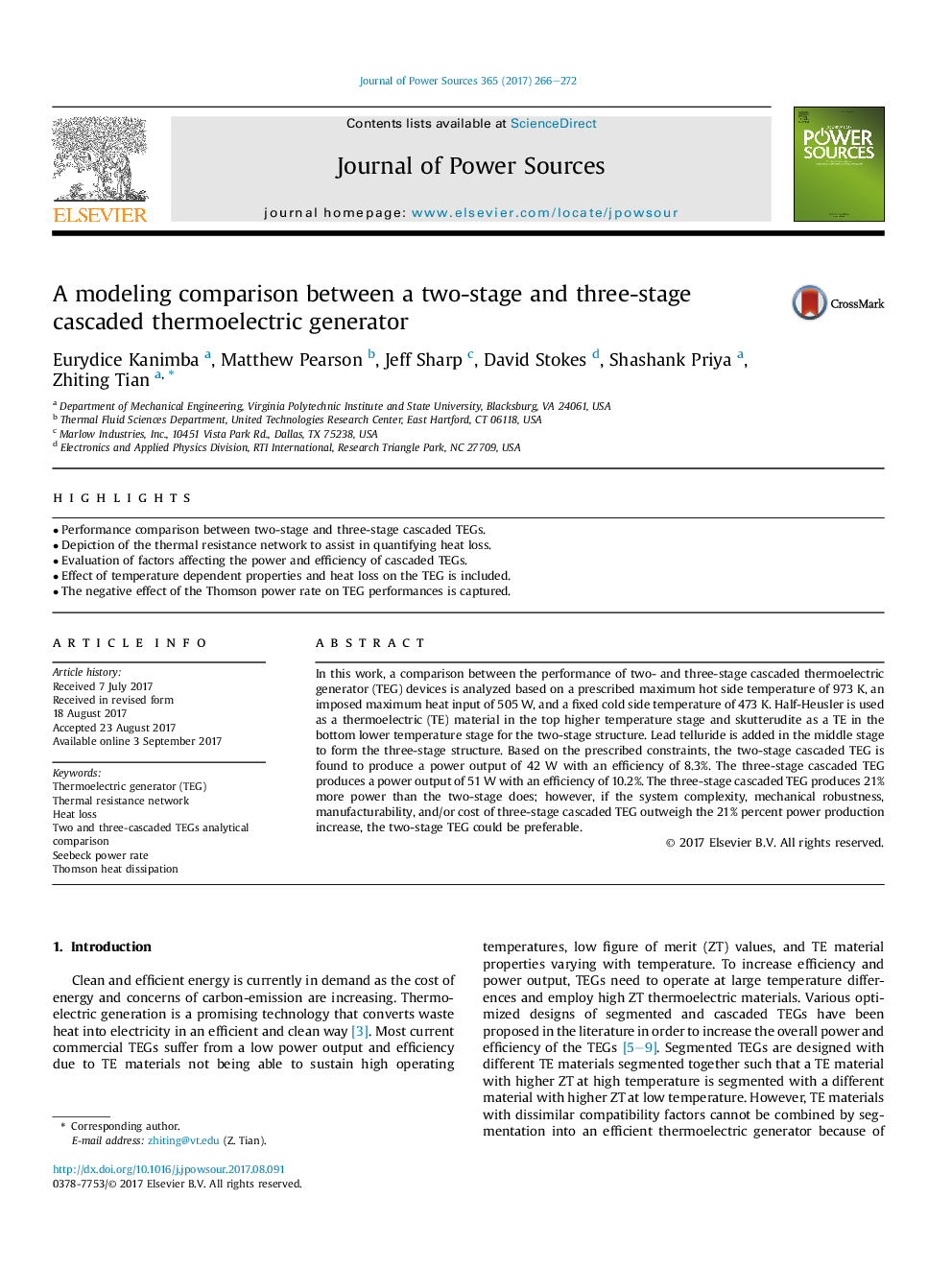| Article ID | Journal | Published Year | Pages | File Type |
|---|---|---|---|---|
| 5148802 | Journal of Power Sources | 2017 | 7 Pages |
Abstract
In this work, a comparison between the performance of two- and three-stage cascaded thermoelectric generator (TEG) devices is analyzed based on a prescribed maximum hot side temperature of 973Â K, an imposed maximum heat input of 505Â W, and a fixed cold side temperature of 473Â K. Half-Heusler is used as a thermoelectric (TE) material in the top higher temperature stage and skutterudite as a TE in the bottom lower temperature stage for the two-stage structure. Lead telluride is added in the middle stage to form the three-stage structure. Based on the prescribed constraints, the two-stage cascaded TEG is found to produce a power output of 42Â W with an efficiency of 8.3%. The three-stage cascaded TEG produces a power output of 51Â W with an efficiency of 10.2%. The three-stage cascaded TEG produces 21% more power than the two-stage does; however, if the system complexity, mechanical robustness, manufacturability, and/or cost of three-stage cascaded TEG outweigh the 21% percent power production increase, the two-stage TEG could be preferable.
Related Topics
Physical Sciences and Engineering
Chemistry
Electrochemistry
Authors
Eurydice Kanimba, Matthew Pearson, Jeff Sharp, David Stokes, Shashank Priya, Zhiting Tian,
